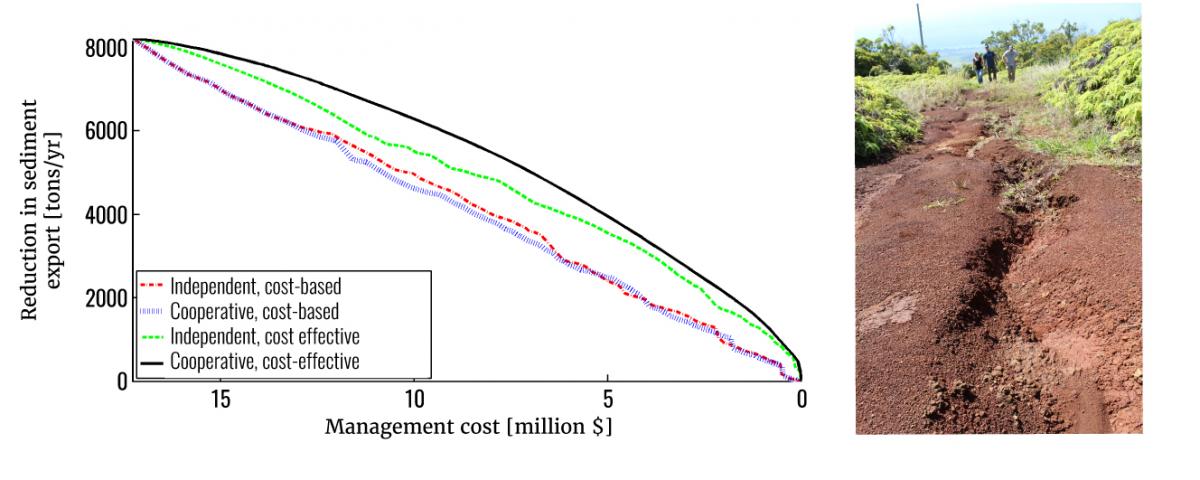Evaluating tradeoffs – West Maui sediment
Increased runoff of sediment and pollutants from land threaten coral reef ecosystems around the world. These land-based source pollutants (LBSP) have been linked to degradation on some Hawaiian reefs. As an example of how to quantitatively evaluate management options for reducing key drivers of reef change, we developed a decision support tool that analyzes the costs and benefits of different management strategies aimed at reducing LBSP8. Specifically, we examined the tradeoffs, in terms of management cost and sediment reduction, among potential agricultural road repair management actions in West Maui, Hawai‘i. We identified the most cost-effective roads to repair (the most sediment reduction per dollar spent), and found significant cost savings when landowners repaired these.

Figure from Oleson et al. 2017 with permission. Each point represents a set of road segments to be repaired at a given cost, with a given reduction in sediment delivery to the coast. Colors represent whether landowners make decisions independently (red or green lines) or cooperatively (blue and black lines) and whether they choose roads for repair based on cost ($) or cost-effectiveness (tons of sediment reduced/$). The most efficient outcome is achieved with cooperative management targeting cost-effective road repairs (black line).
We further discovered the best environmental gains for lowest economic cost could be achieved when landowners cooperated, although the benefits of cooperation dissipate if landowners do not target cost-effective roads. These decision tools can help managers make better environmental decisions with limited resources. We plan to undertake additional tradeoff analyses to examine other drivers of nearshore water quality and reef change in the future.
